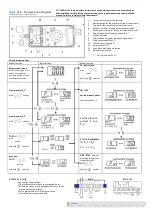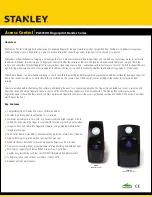
64
Write User memory of HF ID tags
Service available
: DTE105, DTE605
This service is supported in the channel mode "RWH"
Method: POST
URL:
Request body data:
{"
code
": "request", "
cid
": 1010, "
adr
": "data/port[1]/rfid/id_tag/user_data/setblobdata", "
reply
": "
reply text
",
"
data
": {"pos": 0, "data": "QmFzZTY0IGNvZGVkIHN0cmluZw=="}}
Request
element
Value
Remark
code
"request"
-
cid
<CorrID>
Correlation identifier.
Can be set from 0…32767. e.g. 1010
adr
"data/port[
N
]/rfid/id_tag/user_data/setblobdata"
For DTE10x :
N
= 1…4
For DTE60x, DTE80x, DTE9Xx:
N
= 1
reply
"<string>"
Optional:
Text to be send back in the response.
If not needed, this element can be removed
from the request.
e.g. "reply text"
data
"pos": <Offset>
"data":"<string64>"
(1)
Offset position in User memory of the ID
tag [bytes] : 0…65535 tag, e.g. 0
The ‘data’ string element must be coded in
Base64. The length of the string is
calculated automatically.
Note: setblobdata = "
Set
B
inary
L
arge
OB
ject
Data
"
(1)
Example of data to be written to the ID tag's user memory
Base64: QmFzZTY0IGNvZGVkIHN0cmluZw==
ASCII:
Base64 encoded string
HEX:
42617365363420636F64656420737472696E67
Response data:
{"
cid
":1010,"
code
":200}
Response
element
Value
Remark
cid
<CorrID>
Correlation identifier.
Same as send in request. e.g. 1010
code
<status code>
Response code of the IoT core
See chapter ->
e.g. 200














































